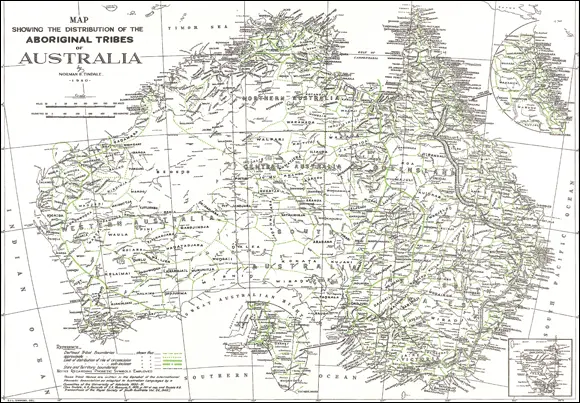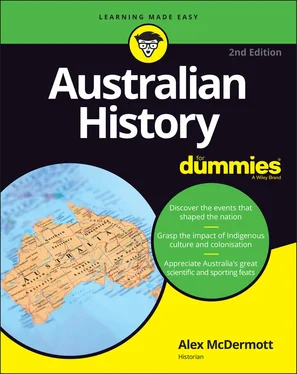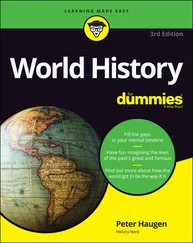1 ...6 7 8 10 11 12 ...30
Entering the New Millennium
The 21st century began just as Australia was emerging from hard times and into a new era of prosperity and widespread wealth. Thanks to the hard yards of economic reforms in the 1980s and 90s, from 2004 Australia was in a great position to benefit by the China boom, China’s dramatic economic development after joining the World Trade Organisation in 2001. This created huge demand for Australia’s natural resources, as well as creating huge new markets for Australian education and tourism sectors. In significant part because of this Australia was able to avoid many of the disastrous problems that beset the north Atlantic countries in Europe and the US in the wake of the 2008 global financial crisis. In the 2010s though, China’s geostrategic expansion began to create a host of new problems for its regional neighbours to wrestle with, and Australia has had to navigate these changing realities.
Aside from ‘the China Question’, other global challenges haven’t been shy about imposing themselves. How best to deal with climate change continues to vex us, and has triggered the fall of Prime Ministers, Opposition leaders and whole governments. The Islamist attacks of September the 11th, 2001, (aka ‘9/11’) was followed by another terror attack on Australian and other western tourists at Bali in October 2002. The ‘War on Terror’, and protracted conflicts in Iraq and Afghanistan was another by-product of the 2001 terror attacks, and have ensured argument amongst Australians on the rights and wrongs of this practically ever since. Whilst all this was happening other issues also demanded attention: Indigenous reconciliation, Same Sex Marriage, Asylum Seekers, sexual harassment of women, free speech and the freedom of religion have all elicited debate, much of which continues ongoing. And then there was that COVID thing …
As the third decade of the new millennium gets under way, the ongoing story of Australia is showing no signs of slowing up any time soon.
Chapter 2
First Australians: Making a Home, Receiving Visitors
IN THIS CHAPTER
 Finding our way to Australia with the first indigenous arrivals
Finding our way to Australia with the first indigenous arrivals
 Meeting the early explorers and traders who passed through
Meeting the early explorers and traders who passed through
In this chapter, you get to stand back and take the long, long view. While most of the rest of the book is chiefly concerned with the events that took place after British settlers started arriving in the late 18th century, this chapter looks at the almost unthinkably long period of human occupation of the Australian continent before that.
Indigenous Australians arrived multiple millennia ago. They developed a uniquely successful system of living that stood the test of time. Then, in the last few hundred years before British settlement, other visitors started turning up too. In this chapter, I provide some sense of the world Indigenous Australians developed and maintained, and a feel for what was going on with the Macassans, Spanish, Portuguese and Dutch later on.
Australia is the driest, flattest inhabited continent in the world. The country is a vast span of stony deserts with only a fringe of arable land clinging to the edges where the weather is milder and rain more reliable. But during the last Ice Age (around 40,000 years Before Present), the situation was much, much worse. Almost all the world’s fresh water was locked up in the enormous glaciers that covered the north of Europe, leaving scarcely any to spare for the Great Southern Land. The continent of Australia was a landscape desolate beyond anything we can picture now.
And yet — people lived here. These people had a complex culture, they traded, and they told stories and sang songs in hundreds of languages (see Figure 2-1). The people who sang those songs were masters of survival in the harshest landscape on Earth.
During the Ice Age, sea levels were much lower than today (all that ice had to come from somewhere, after all). One advantage of this was that it was a lot easier to walk to new places, as distinct from swimming or sailing. Australia and New Guinea were connected by a giant land bridge, which explains why these now-distant countries have so many plant and animal species in common. Nevertheless, it was still a long way over open water for prehistoric humans to get to Australia, so whatever else we may conjecture about the first settlers, we’re certain they knew their way around a boat.
No-one knows exactly when the First Australians arrived. The evidence is scanty and, at times, contradictory. Even genetic research is unable to resolve whether Aboriginal people came in one big push or many successive waves. Like all humans, they originated in ancient Africa, but after that, their lineage is still quite murky.
Recent genome sequencing, for example, seems to indicate the one big push theory is correct. However, DNA testing of Aboriginal remains (estimated to be around 40,000 years old) found at Lake Mungo revealed they didn’t share ancestry with modern human beings. Some scientists have speculated that this means migration to Australia didn’t occur in one wave.

Aboriginal tribes of Australia / by Norman B. Tindale, Mitchell Library, State Library of New South Wales, M3 804eca/1788/1.
FIGURE 2-1:Aboriginal Australia pre–European settlement.
According to the genome research from 2016, Papuan and Aboriginal ancestors reached the supercontinent that included what would become Australia around 50,000 years ago, picking up the DNA of Neanderthals, Denisovans and another extinct hominin along the way. The same study indicated Papuans and Aboriginals then split around 37,000 years ago, long before the continents were finally cut off from each other around 8,000 years ago. Although they must have passed through South-East Asia on their way to Australia, they aren’t related to any known Asian population. Today, linguistic similarities exist between some Aboriginal people and the indigenous peoples of New Guinea, but this is likely to be the result of (relatively) recent trade and intermarriage.
 Who these first settlers were, where they came from, and why they came to Australia may always remain a mystery. All we know is, when the glaciers melted and the sea levels rose again, Aboriginal people abandoned boating and stayed where they were.
Who these first settlers were, where they came from, and why they came to Australia may always remain a mystery. All we know is, when the glaciers melted and the sea levels rose again, Aboriginal people abandoned boating and stayed where they were.
 In Tasmania, the people became further isolated when the land bridge to the mainland vanished under the rising water. It’s a vivid image: Picture a populated fertile promontory with a thriving trade across a slowly eroding isthmus. One day, it’s a short swim to the local hunting ground, then a few years down the track it’s crossable by canoe … until, finally, the mainland recedes from sight, memories fade, and the Tasmanians are on their own for the next 12,000 years.
In Tasmania, the people became further isolated when the land bridge to the mainland vanished under the rising water. It’s a vivid image: Picture a populated fertile promontory with a thriving trade across a slowly eroding isthmus. One day, it’s a short swim to the local hunting ground, then a few years down the track it’s crossable by canoe … until, finally, the mainland recedes from sight, memories fade, and the Tasmanians are on their own for the next 12,000 years.
Exactly how long it took for Aboriginals to spread out over the continent is disputed (as is just about everything in this very remote period). Anywhere from a few thousand to over 10,000 years has been suggested. What isn’t disputed is that, despite the immense diversity of the continent (desert in the centre, tropical rainforest on the Cape, glaciers on the mountains of Tasmania), Aboriginal peoples found ways to thrive in every ecological niche available.
Читать дальше

 Finding our way to Australia with the first indigenous arrivals
Finding our way to Australia with the first indigenous arrivals
 Who these first settlers were, where they came from, and why they came to Australia may always remain a mystery. All we know is, when the glaciers melted and the sea levels rose again, Aboriginal people abandoned boating and stayed where they were.
Who these first settlers were, where they came from, and why they came to Australia may always remain a mystery. All we know is, when the glaciers melted and the sea levels rose again, Aboriginal people abandoned boating and stayed where they were. In Tasmania, the people became further isolated when the land bridge to the mainland vanished under the rising water. It’s a vivid image: Picture a populated fertile promontory with a thriving trade across a slowly eroding isthmus. One day, it’s a short swim to the local hunting ground, then a few years down the track it’s crossable by canoe … until, finally, the mainland recedes from sight, memories fade, and the Tasmanians are on their own for the next 12,000 years.
In Tasmania, the people became further isolated when the land bridge to the mainland vanished under the rising water. It’s a vivid image: Picture a populated fertile promontory with a thriving trade across a slowly eroding isthmus. One day, it’s a short swim to the local hunting ground, then a few years down the track it’s crossable by canoe … until, finally, the mainland recedes from sight, memories fade, and the Tasmanians are on their own for the next 12,000 years.










